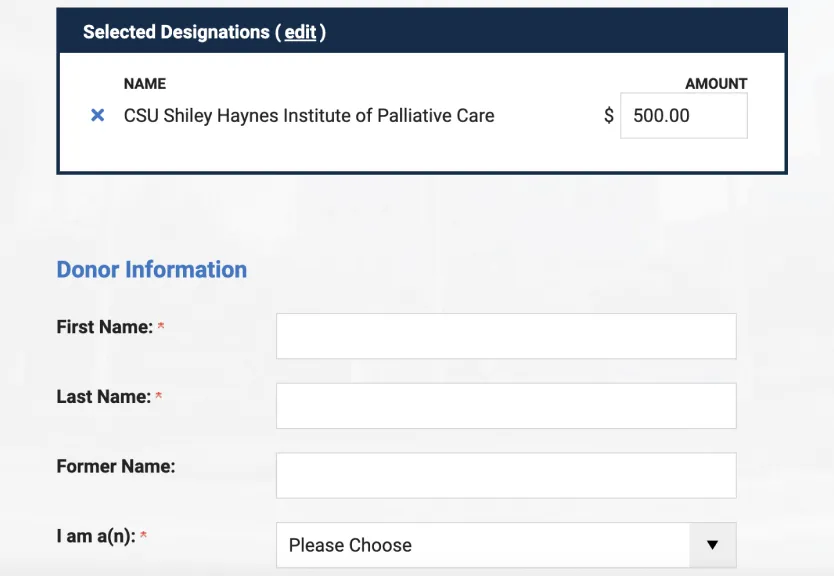Recognizing and Expanding the Impact of Palliative Care Social Work
By Larry Beresford
Hospice and palliative care social workers who want to advance their field must recognize their value, demonstrate their strengths, and assert themselves as leaders on the interdisciplinary team, says Gary Gardia, Executive Director of the Advanced Palliative and Hospice Social Worker Certification (APHSW-C) program.
Gardia, LCSW, APHSW-C, said self-doubt, healthcare system hierarchies, and daily challenges of the job can cloud the way social workers see themselves, as well as how they’re perceived by colleagues. Deepening key skills and becoming certified sends a powerful message that elevates the entire field.
“We need to be more focused and more intentional about our skill set and that’s what certification is about,” said Gardia, one of the founding faculty members for the CSU Shiley Institute for Palliative Care’s online Post-MSW Certificate in Palliative Care program. “We need to recall who we are and what we do.”
So far, nearly 400 hospice and palliative care social workers have earned APHSW certification since the exam launched in 2019, he said.
This year the COVID-19 pandemic forced the cancellation of the spring testing period, so applicants were moved to the fall. The general application window for fall testing closes at the end of August, with exams administered between Sept. 1 and Oct. 31 at PSI test sites throughout the United States and Canada.
COVID-19 has affected hospice and palliative care social work in other ways as well, Gardia said, but the field is rising to the moment.
“Addressing challenges is what social work does and has always done,” he said. “We look at the world, figure out the opportunities, jump in there, and take charge.”
‘Showing Up With Value’
Gardia previously served as the social work section leader for the National Hospice and Palliative Care Organization’s National Council of Hospice and Palliative Professionals. He said in that role social workers often asked him “’How can we get our coworkers and organizational leadership to value us?’ and hospice managers would ask, ‘how can we get our social workers to do better?’”
The answer is the same, he said. Social workers need to show up with value.
“That’s how you get other people to value you,” he said. “Part of that value is being able to clearly articulate your role on the interdisciplinary team. I’m not sure all hospice and palliative care social workers can do that.”
Social workers are experts at “seeing people beyond their physical bodies and considering their spiritual pain, psychosocial pain and suffering,” Gardia said. “We’ve all seen cases where psychosocial suffering was actually worse than the physical pain.”
Addressing psychosocial suffering is a key domain of effective palliative care, according to the National Consensus Project’s Clinical Practice Guidelines for Quality Palliative Care.
“If you agree with that,” Gardia said, “then the social worker needs to be an integral part of team meetings—not just called on as an after-thought.”
Advancing the Patient’s Perspective
Social workers who are leaders on hospice and palliative care teams can help ensure a truly interdisciplinary approach to care, he said.
Although many hospice and palliative care programs encourage that interdisciplinary approach, too often it’s from a medical model of care, Gardia said.
“Often when we face difficulties, we fall back on what we were taught,” he said.
One danger in that is looking at care plans from the provider’s perspective, rather than the patient and family’s perspective.
“When we say the patient is non-compliant or in denial, to me that’s a reflection of a lack of professional skills,” Gardia said. “As social workers, we need to step up and say ‘Non-compliant just means we have the wrong plan of care. (Often) it’s our plan, not the patient and family’s plan.’”
Addressing Social Isolation
The importance of psychosocial support and whole-person care is especially clear in a crisis like COVID-19, he said. Safety protocols that limit in-person visits require an extra level of effort and innovation, but social workers are uniquely equipped to step up.
“Our challenge is how to positively influence the care within (COVID) restrictions,” Gardia said. “Social workers can say ‘how can we make sure we come together with chaplains and volunteers to make a difference for the family? How can we be more creative about that?’”
Perhaps the biggest challenge and opportunity is addressing loneliness and isolation.
“In the pandemic, I would assume that almost everyone (in our care) could be at high risk (for social isolation),” he said. “What we need to be doing is saying to our teams: ‘I’ve got this.’”
For example, he said, after a Zoom visit with a client, social workers can look for other ways to flood that person with phone calls and connection.
“We must ask ourselves ‘how can we reconnect people with their traditional sources of support?” he said. “Regardless of the obstacles imposed by the pandemic, how can we provide them with the best hospice and palliative care experience possible?”




